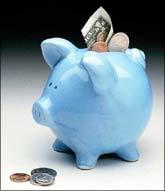 Investing is a complex term and a daunting exercise for the common man. Consider a doctor for whom conducting a by-pass surgery is child's play but who struggles to understand what it means when an investment advertisement says 'interest compounded half-yearly'.
Investing is a complex term and a daunting exercise for the common man. Consider a doctor for whom conducting a by-pass surgery is child's play but who struggles to understand what it means when an investment advertisement says 'interest compounded half-yearly'.
However, one needs to understand these financial calculations as it one's own money that is at stake after all.
In this article we try and make things simpler for the aam admi. Understanding numbers is not rocket science. What one needs is the right interpretation of them.
Let us now try to understand basic mathematical techniques that will enable us to make informed decisions regarding our investments.
Concept A: 10 + 10 = 21
On the face of it 10+10 should be 20, you might think this is bad math. However, that's not the case at all. Here we are factoring in the returns on your investment as well.
The '10' here is the percentage of return earned during the first and second period of investment.
For instance, say Mr Investor lends Rs 100 to a friend who promised an interest of 10% per annum. Now the return for year one is Rs 10. The total amount at the end of year one in the account of Mr Investor equals principal of Rs 100 and interest on principal of Rs 10 making the total available balance Rs 110.
In the next year, Mr Investor earns another 10% on his balance at the beginning of year two i.e. Rs 110. So the interest he earned was Rs 11. The total interest earned by Mr Investor for two years was Rs 10 and Rs 11 totalling Rs21 which is what our equation above signifies.
This is an important concept as we tend to look at returns on our portfolio over a particular period. What we must also look at is the return over return. Here we are talking about compounding returns or interest and not simple return or interest.
Concept B: Double it -- Rule of 72
Many of us have numbed our fingers using calculators or struggled with a spreadsheet, just to find out when our investment will double. There is a thumb rule called the 'Rule of 72' -- that gives us a very reasonable idea of over what approximate time frame our money will double.
Just divide 72 by the rate of return or interest rate to find out the duration during which your money will get doubled. We can check this through an example. Say National Savings Certificate (NSC) promises a return of 8% p.a.
Dividing 72 by 8 we get 9 which is approximately equal to the time frame guaranteed by the Postal Department.
Another way to use this rule of thumb is to guess the rate of return that you must get for an investment to double within a particular period.
Say, Mr Ramesh wants to buy a house after six years for a budget of Rs 30 lakh (Rs 3 million). He has Rs 15 lakh (Rs 1.5 million) with him as of now. He is wondering how much he needs to earn every year for his money to double so that he can get to buy his house after six years.
What he needs to do is simply divide 72 by 6 and get 12%. Mr Ramesh needs to make investments in assets that can fetch him a return of 12% on a compounded basis to achieve this goal.
Concept C: Recovering from losses
Welcome the green and curse the red. No this is not how one should feel about our traffic signals, but is actually a lesson to be learnt by someone who is studying investing. No one likes losses and there is no exception to this.
Recovering from a loss requires a greater percentage change when compared with the percentage change in loss of value. Take Mr Money as a case who has a net worth of Rs 10 lakh (Rs 1 million) today. Let's assume a scenario where markets turn bad and Mr Money has to see some red marks in his portfolio's return column.
Say he loses 15% of his net worth during this market fall and his net worth now stands at Rs 8.5 lakh (Rs 850,000). How much should Mr Money gain on returns to get back to his initial portfolio value?
To get back to Rs 10 lakh, Mr Money needs to earn a return of 17.6%. One may notice a considerable difference of 2.6% between the initial loss and the required return on profits to be earned to get back to the original investment.
Though these percentages might change with facts of the case, the point being made is that if we suffer a loss of x% on our portfolio, we need a gain of (x+y)% to get back to the initial investment.
Concept D: Compounding
|
Rs. 10,000 x 10% x 6/12 = Rs. 500 |
For instance, an interest rate of 10% compounded half-yearly means that interest will be calculated every six months. Here, 10% is said to be the nominal rate. Simply speaking, it implies an effective half-yearly interest rate of 10%/2 = 5%. At the end of one year we will have accumulated to [10,000 x (1+0.05) x (1+0.05)] which will not be the case when interest is calculated yearly.
As depicted in the equation, interest for the first six months (H1) for an investment of Rs 10,000 at interest rate of 10% works out to Rs 500. Till this part the compounding effect does not show its magic and the result, i.e. Rs 500 will work out in both cases -- compounded yearly and compounded within a year.
|
Rs. 10,500 x 10% x 6/12 = Rs. 525 |
Over a year, the investor earns Rs 25 more than what she would have pocketed if the interest was compounded yearly. The importance of this concept can be well appreciated if the duration and amount of investment is large.
Following table gives us the interest calculations for an investment of Rs 10,000 and interest rate of 10%, being compounded yearly and half-yearly:
|
Year |
Half yearly Compounding |
Yearly Compounding |
Difference |
|
1 |
10,250 |
10,000 |
250 |
|
2 |
11,301 |
11,000 |
301 |
|
3 |
12,459 |
12,100 |
359 |
|
4 |
13,736 |
13,310 |
426 |
|
5 |
15,144 |
14,641 |
503 |
|
6 |
16,696 |
16,105 |
591 |
|
7 |
18,408 |
17,716 |
692 |
|
8 |
20,294 |
19,487 |
807 |
|
9 |
22,374 |
21,436 |
939 |
|
10 |
24,668 |
23,579 |
1,088 |
|
Total |
165,330 |
159,374 |
5,956 |
The difference of Rs 5,956 is worth the above calculation.
As one may notice from the above discussions, the maths of investing is not rocket science. An understanding of these concepts will make investors take more informed decisions about their money and investments.







